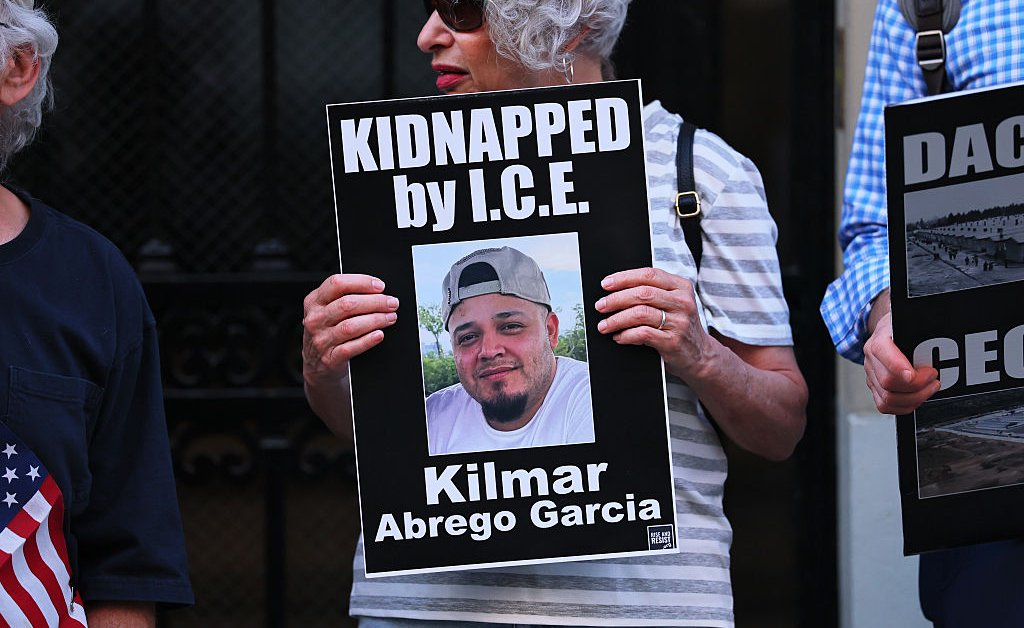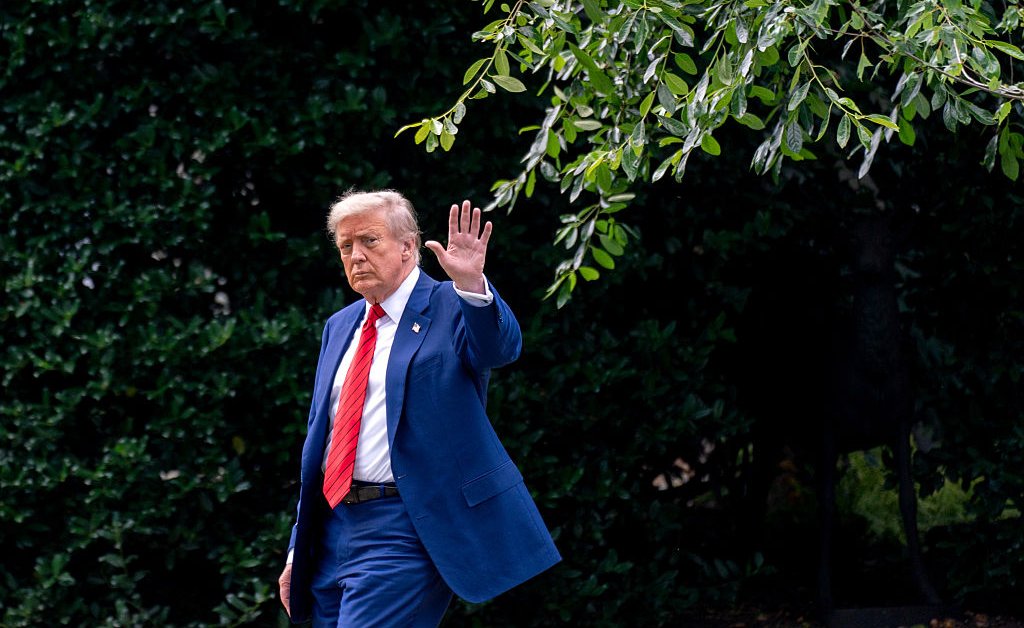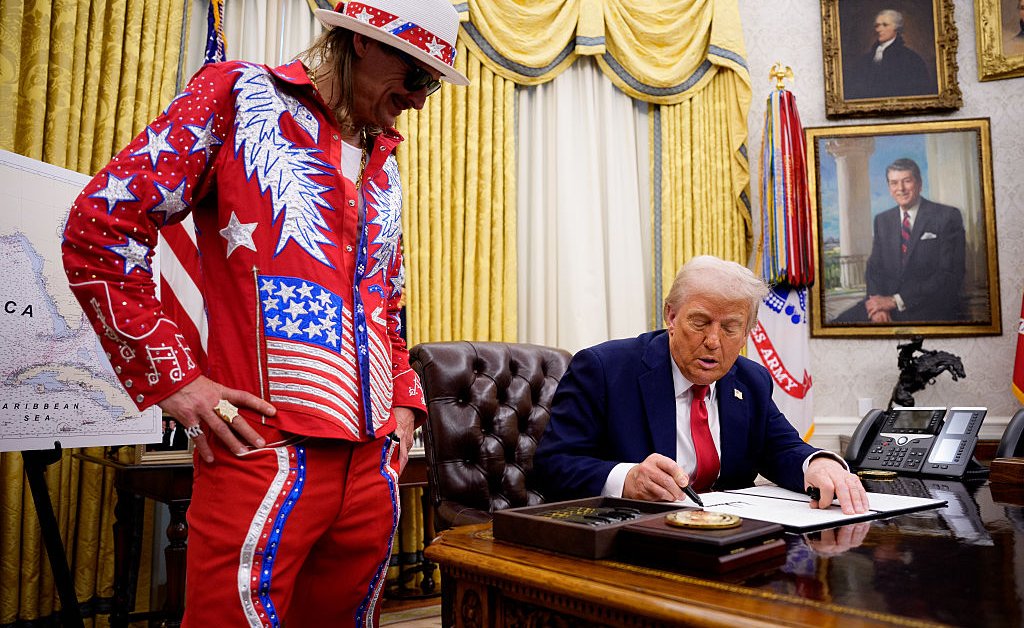As the Trump Administration seeks to deliver on the President’s campaign promise to enact the “largest deportation program” in history, carrying out a surge of immigration arrests and working to ramp up the pace of deportations, officials have wrongfully removed multiple people from the country.
Less than six months into President Donald Trump’s second term, courts have directed his Administration to bring back at least four people it has deported.
In the latest example, a court of appeals on Tuesday ordered the federal government to “facilitate” the return of Jordin Melgar-Salmeron, who was deported to El Salvador on May 7, just thirty minutes after the same court issued a stay of removal, according to court documents. The federal government said his deportation occurred because of a “confluence of administrative errors.”
In the order, judges cited the case of Kilmar Abrego Garcia, the mistakenly deported Maryland man who the Administration returned to the U.S. earlier this month after a contentious legal battle during which the Supreme Court upheld a lower court order demanding that the federal government bring him back to the country.
The Trump Administration’s aggressive immigration enforcement has faced wider pushback from the court system and the public. A number of the Administration’s actions have been blocked by the courts. A series of Immigration and Customs Enforcement (ICE) raids targeting undocumented workers in Los Angeles, meanwhile, sparked multi-day protests in the city—and beyond.
In other cases, however, the Supreme Court has ruled in favor of the Administration on immigration, giving it legroom to revoke temporary legal protections and deport many migrants—including to countries other than their own.
“The Trump Administration is trying to remove as many people as they can, and the way in which they want to do it is by doing so without due process,” says Amanda Frost, a law professor at University of Virginia’s School of Law. “In addition to the fact that it violates the law, both constitutional and statutory, it also leads to risk.”
Here’s what you should know about the people courts have said were wrongfully deported by the federal government.
Jordin Melgar-Salmeron
Melgar-Salmeron came to the U.S. in search of a “better life” as a teenager after experiencing poverty and violence growing up in El Salvador, according to court documents. He lived and worked in Virginia for years.
Department of Homeland Security (DHS) Assistant Secretary Tricia McLaughlin told TIME that Melgar-Salmeron was removed from the U.S. by ICE in 2012, though he later returned to the country.
Prior to his deportation in May, he had been in immigration detention since 2022 amid pending deportation proceedings after serving a two-year prison sentence for illegally possessing an unregistered sawed-off shotgun.
On May 7, an appeals court issued a stay on his removal. But although the federal government assured the court that it would “forebear [the] removal” of Melgar-Salmeron until May 8, according to court documents, officials placed him on a one-way flight to El Salvador a day early—and about thirty minutes after the appeals court barred his removal.
DHS stands by its decision to deport Melgar-Salmeron. “This ruling is completely at odds with President Trump’s duty to faithfully execute federal law,” McLaughlin said in a statement. The DHS official alleges that Melgar-Salmeron was removed from the U.S. twice and has been convicted of “crimes related to MS-13 gang activity.”
The federal government, which has been ordered to facilitate Melgar-Salmeron’s return, has said that it will parole him if he presents himself at a U.S. point of entry. The court ordered the government to file a declaration stating Melgar-Salmeron’s location, and what steps it will take, and when, in order to bring him back to the United States.
Kilmar Abrego Garcia
The high-profile case of Abrego Garcia’s deportation and the Administration’s initial defiance of a court order prompting his return sparked outrage and concerns of a constitutional crisis.
The 29-year-old, who had been living with his wife and children in Maryland, entered the U.S. illegally years ago but was granted a “withholding of removal” order that prevented him from being returned to El Salvador due to potential persecution in 2019.
Despite the order, he was arrested and deported in March after Trump invoked the 1798 Alien Enemies Act, which allows officials to expedite deportations of citizens of an enemy nation during periods of invasion or wartime. The President’s order invoking the law cited risks posed by Tren de Aragua, a Venezuelan gang that the Administration designated a foreign terrorist organization in February.
Read more: The Legal and Political Battle Over Kilmar Abrego Garcia’s Deportation
Abrego Garcia was deported to a notorious prison in El Salvador known as CECOT along with dozens of other people. The federal government later acknowledged in a court filing that Abrego Garcia was removed from the U.S. due to an “administrative error,” but has defended his deportation, alleging without verification that he is a member of MS-13, another gang it has designated as a foreign terrorist organization. Abrego Garcia has denied that he is a gang member.
The Administration was ordered to facilitate Abrego Garcia’s return. But the federal government stalled in doing so, claiming that it could not comply with the court’s order.
Abrego Garcia was ultimately returned to the U.S. on June 6 to face charges for an alleged conspiracy to “transport thousands of undocumented” immigrants, according to a federal indictment. He has pleaded not guilty.
Daniel Lozano-Camargo
Daniel Lozano-Camargo, a Venezuelan immigrant, was also deported to El Salvador in March despite a court order protecting him from deportation. Politico identified the man, though in court proceedings he has been referred to as “Cristian.”
The 20-year-old, who entered the U.S. as an unaccompanied minor, had been living and working at a car detailing business in Houston. He had been arrested and charged with cocaine possession twice in the year prior to his deportation. He was transferred into the custody of ICE, which had claimed he was in the country illegally, earlier this year after pleading guilty to a drug charge as part of a plea deal.
A 2024 settlement prevented immigration officials from deporting him, however, as he had an active asylum application pending.
In spite of that, he was deported with more than 200 other individuals, including Abrego Garcia, to CECOT. The Trump Administration alleges that he is a member of Tren de Aragua, per El Pais, though he has denied any association with the Venezuelan gang.
A district court judge ruled that his deportation violated the 2024 settlement and ordered the Administration to bring him back to the U.S., despite the allegations of potential gang associations. “I don’t think that this is a case about whether or not Cristian is going to eventually get asylum. Whether he ultimately receives asylum is not the issue. The issue is, and has always been, one of process,” Stephanie Gallagher, a district judge, said in May.
Starting on Friday, June 6, and on every following Friday, the Administration was ordered to provide a declaration sharing Lozano-Camargo’s location, steps taken to facilitate his return, and additional steps officials plan to take to bring him back.
“O.C.G.”
A fourth individual, who has been identified in court proceedings by the pseudonym O.C.G., was also wrongfully deported to Mexico, though he has since been returned to the U.S.
Born in Guatemala, the man said he came to the U.S. in March 2024 and sought asylum after experiencing persecution and torture, but was denied an interview and deported, according to court documents.
He returned to the U.S. a second time, allegedly being held for ransom and raped in Mexico because of his sexual orientation while on his way there before arriving and being arrested by Border Control in May 2024.
An immigration judge determined that he would likely be persecuted or tortured if deported to Guatemala again, and granted him an order protecting him from removal.
In February, however, he was placed on a bus to Mexico, and was then sent to Guatemala, where he had been living in hiding.
A court granted an order for his return in May. The judge noted he had “no known criminal history.”
The Trump Administration brought O.C.G. back to the U.S. in early June.








